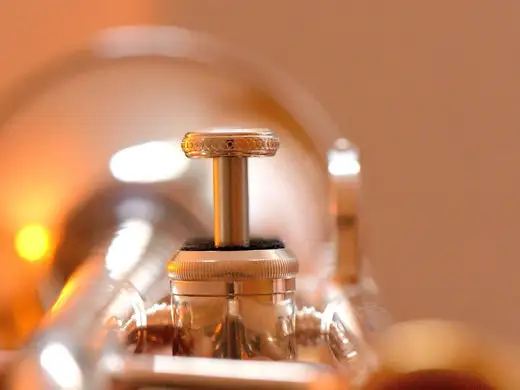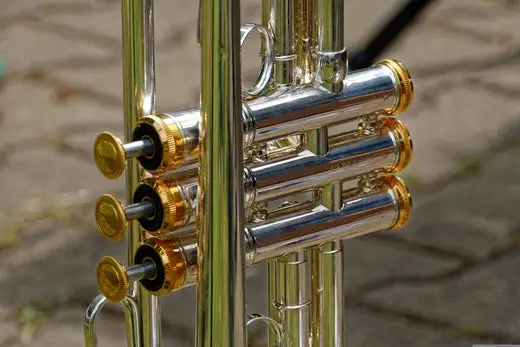Student Feature: Mastering the Five Core Elements for Musical Success
Preparing for a music school audition or a professional job interview can indeed feel like a scene from a gripping movie, filled with tension and anticipation. Yet, breaking down the process reveals that success hinges on mastering some fundamental skills. Here’s a breakdown of those essential elements: As an advanced player, harmonizing with others requires adjusting notes slightly to match the surrounding harmony. This involves relying on your ear rather than a tuner, as you’ll need to adapt to the specific context of the music. In essence, mastering these five elements—Sound, Intonation, Articulation, Rhythm, and Style—can greatly enhance your chances of success in auditions or professional performances. With diligent practice and attention to detail, you can navigate the challenges and emerge as a confident and skilled musician. Interval Example Adjust Higher Note (in Cents) Minor Third C to Eb +16 Major Third C to E –14 Perfect Fourth C to F -2 Perfect Fifth C to G +2 Minor Sixth C to Ab +16 Major Sixth C to A -16 3. Articulation Articulations lend definition and character to the piece you’re playing. They must be intentional, clear, accurate, and well-suited to the given passage. Your listeners shouldn’t wonder if your notes were legato or staccato! To refine your articulation, practice Clarke’s Technical Studies using the same articulation for an entire exercise at a time – whether that is legato, marcato, staccato, or accented. Be sure the tongue always hits the same place to give the exact same sound to each note. Slow, diligent practice will enable you to hear what exactly you need. Listen carefully to what you are doing; when you can hear your own inaccuracies, you can fix them easily. To attain the highest rank as trumpeter, you will need flawlessly consistent articulation. 4. Rhythm Rhythmic irregularities are just as noticeable as out-of-tune notes! When performing, perfect rhythm is a must. Make sure you understand the rhythm – how it lines up with both the beat, as well as how it is subdivided within the beat. This may require intellectual effort! Take the time to sit down and do the math. Mark with a pencil where the beats fall; then turn on the metronome and speak the rhythm out loud, making sure that the clicks you hear occur in the same places as the ones you’ve marked. Next, play the rhythm on the trumpet with the metronome, but on a single note. Finally, add the correct notes. Work daily with the metronome to keep your tempo steady and help clarify your understanding of the rhythm. While it’s useful to train yourself to keep the beat with your feet or toes (this requires feeling the beat internally), there is also no substitute for the unerring accuracy of a metronome. To get the best of both worlds, it’s a good exercise to play the passage while tapping your foot, with the metronome on. If you don’t already own a metronome, you can either get a stand-alone device or buy an app for your smartphone or tablet. Whichever you buy, be sure it can play subdivisions of the beat, especially for complex passages. Once you can play accurately with the beat subdivisions, then you are ready to work with larger beats. As a side note, make sure you practice with a pencil at the ready! Your music is for study and active engagement, not hanging in your living room. Effective markings allow you to not waste your chops playing the same passage wrong over and over again. Be specific, concise and legible, so that tomorrow you don’t have to figure out the same problems all over again! 5. Style Often students play with one style – loud and fast! Once in a while that sets the perfect mood, but unless your name is Tim Morrison, it’s possible that there are some nuances you’re missing. As you begin to explore this aspect of your playing, there are three main areas you should consider: the composer’s intentions; historical period; and mood. a. The composer’s intentions Look at the tempo marking in the music, dynamics, and any other markings. Research what each marking means. Is it a fanfare, ballad, march, lament? Listen to recordings of your piece, as well as other works by the same composer, to learn the composer’s sound and style. Learn to match your own playing to the recording. For contemporary pieces, you may need to contact the composer directly to obtain a recording of the piece. If you are an advanced player, it may be illuminating to listen to recordings of many works by the composer of your new solo, excluding recordings of your actual piece (at least for a few weeks). This will allow you to flex your creative muscles in forming your unique interpretation. b. Historical Period From the Middle Ages to the Renaissance, Baroque to Classical, Romantic to 20th Century, each period of music has its own palette of sounds. Find out a little bit about the composer and historical period of each piece you begin. For example, say you just got the music to Telemann’s Trumpet Concerto in D. You discover that the piece is Baroque, which means that its emotional qualities should be expressed tastefully and in moderation. You focus on clean, clear articulations and distinct contrasts between loud and soft. Once you can play the notes accurately, you add musical ornaments such as mordents, trills, and appoggiaturas. After finishing the Telemann, your teacher assigns you the Hindemith Trumpet Sonata. You consult your musical dictionary and discover that a sonata is essentially a duet between the piano and trumpet. You begin to familiarize yourself with both parts and how they fit together. In talking to your teacher, you learn that Hindemith wrote the piece in response to the genocide in Europe during the first world war. You seek ways to express the darker qualities of the piece through your dynamics, vibrato, and tempo. c. Mood When a composer writes p or f in the







